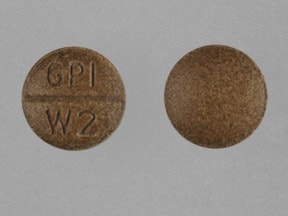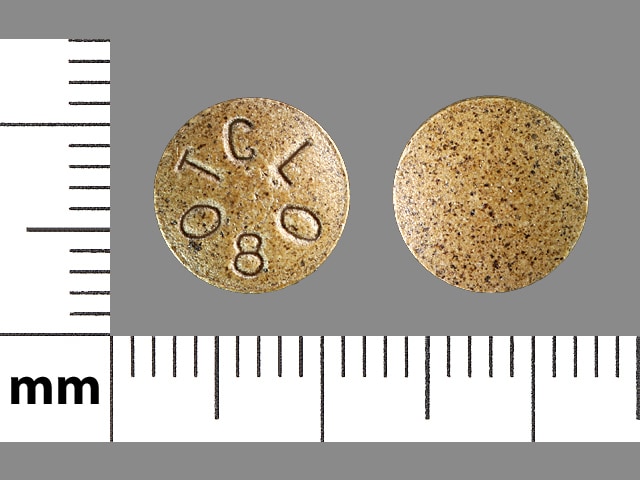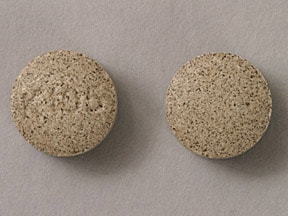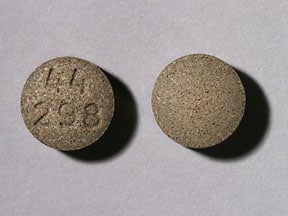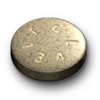Dosage Forms
Excipient information presented when available (limited, particularly for generics); consult specific product labeling. [DSC] = Discontinued product
Leaves, Oral:
Generic: (454 g)
Liquid, Oral:
Senexon: 8.8 mg/5 mL (237 mL [DSC]) [contains methylparaben, propylene glycol, propylparaben]
Generic: 8.8 mg/5 mL (237 mL)
Syrup, Oral:
Senna-GRX: 8.8 mg/5 mL (15 mL, 236 mL) [contains parabens, propylene glycol]
Generic: 8.8 mg/5 mL (5 mL, 236 mL, 237 mL); 176 mg/5 mL (15 mL, 237 mL)
Tablet, Oral:
CareAll Senna Laxative: 8.6 mg
Ex-Lax: 15 mg [DSC] [sodium free]
Ex-Lax Maximum Strength: 25 mg [DSC] [sodium free]
Geri-kot: 8.6 mg
GoodSense Laxative Pills: 25 mg [contains brilliant blue fcf (fd&c blue #1), corn starch]
GoodSense Senna Laxative: 8.6 mg
Perdiem Overnight Relief: 15 mg [DSC]
Senexon: 8.6 mg [DSC]
Senna Lax: 8.6 mg [DSC]
Senna Laxative: 8.6 mg
Senna Smooth: 15 mg [contains sodium benzoate]
Senna-Lax: 8.6 mg
Senna-Tabs: 8.6 mg
Senna-Time: 8.6 mg
SennaCon: 8.6 mg [DSC]
Senno: 8.6 mg
Senokot: 8.6 mg
Senokot Extra Strength: 17.2 mg
Senokot XTRA: 17.2 mg [DSC]
Generic: 8.6 mg
Tablet Chewable, Oral:
Ex-Lax: 15 mg [DSC]
Ex-Lax: 15 mg [DSC] [chocolate flavor]
Pharmacology
Mechanism of Action
The anthraquinone group of stimulant laxatives includes the plant-derived agents such as senna. Stimulant laxatives typically induce defecation by stimulating peristaltic activity on the intestine by direct action on intestinal mucosa or nerve plexus, therefore increasing motility.
Pharmacokinetics/Pharmacodynamics
Metabolism
Hepatic
Excretion
Feces (via bile); urine
Onset of Action
Oral: Within 6 to 24 hours
Use: Labeled Indications
Constipation: Relieves occasional constipation (irregularity); generally causes bowel movement in 6 to 12 hours
Use: Off Label
Colonic cleansing before colonoscopy (adjunct)c
Data from one uncontrolled study evaluating the use of senna as an adjunct to reduce the amount of polyethylene glycol (PEG) solution necessary suggests that the use of senna as an adjunct in this setting may be beneficial Iida 1992. While the advantage of a lower amount of PEG solution with the use of senna is tolerated better by patients, the lower volumes of PEG solution may reduce the quality of the bowel preparation as was seen in one randomized controlled trial Hookey 2006. Additional data may be necessary to further define the role of senna as an adjunct in colonic cleansing before colonoscopy.
Based on the recommendations for Optimizing Adequacy of Bowel Cleansing for Colonoscopy, the US Multi-Society Task Force on Colorectal Cancer by the American College of Gastroenterology, American Gastroenterological Association, and the American Society for Gastrointestinal Endoscopy, the use of adjunctive agents for precolonoscopy cleansing of the mucosa such as simethicone, flavored electrolyte solutions (eg, Gatorade), prokinetics, spasmolytics, bisacodyl, senna, olive oil, and probiotics is not recommended for routine use since none have consistently shown improved efficacy, safety, or tolerability of the bowel preparation. However, senna may be used in select situations.
Dosage and Administration
Dosing: Adult
Note: Several types of senna products are available on the market and multiple formulations exist that are not equivalent; products composed of sennosides are considered OTC medications; senna pod concentrate and senna leaf extract are considered dietary supplements and are not interchangeable on a mL-to-mL (or mg-to-mg) basis with other senna products that contain sennosides; close attention must be paid to the product description and concentration when ordering or administering.
Constipation: Oral:
Sennosides:
Syrup (8.8 mg sennosides/5 mL): 10 to 15 mL (17.6 mg to 26.4 mg sennosides) once daily; maximum: 15 mL (26.4 mg sennosides) twice daily.
Tablets:
8.6 mg sennosides/tablet: Two tablets (17.2 mg sennosides) once daily; maximum: 4 tablets (34.4 mg sennosides) twice daily
15 mg sennosides/tablet: Two tablets (30 mg sennosides) once or twice daily
17.2 mg sennosides/tablet: One tablet (17.2 mg sennosides) once daily; maximum: 2 tablets (34.4 mg sennosides) twice daily
25 mg sennosides/tablet: Two tablets (50 mg sennosides) once or twice daily
Senna leaf extract syrup (176 mg/5 mL senna leaf extract): Note: Senna leaf extract is considered a dietary supplement and is not interchangeable on a mL-to-mL (or mg-to-mg) basis with other senna products that contain sennosides.
10 to 15 mL (352 to 528 mg senna leaf extract) once daily (preferably at bedtime); may increase to 10 to 15 mL (352 to 528 mg senna leaf extract) twice daily if needed; maximum daily dose: 30 mL/day
Dosing: Geriatric
Refer to adult dosing.
Dosing: Pediatric
Note: Several types of senna products are available on the market and multiple formulations exist that are not equivalent; products composed of sennosides are considered OTC medications; senna pod concentrate and senna leaf extract are considered dietary supplements and are not interchangeable on a mL to mL (or mg to mg) basis with other senna products that contain sennosides; close attention must be paid to the product description and concentration when ordering or administering.
Constipation: Oral:
Sennosides:
Syrup (8.8 mg sennosides/5 mL):
Children 2 to <6 years: 2.5 to 3.75 mL (4.4 to 6.6 mg sennosides) at bedtime, not to exceed 3.75 mL (6.6 mg sennosides) twice daily
Children 6 to <12 years: 5 to 7.5 mL (8.8 to 13.2 mg sennosides) at bedtime, not to exceed 7.5 mL (13.2 mg sennosides) twice daily
Children ≥12 years and Adolescents: 10 to 15 mL (17.6 mg to 26.4 mg sennosides) at bedtime, not to exceed 15 mL (26.4 mg sennosides) twice daily.
Tablets:
8.6 mg sennosides/tablet:
Children 2 to <6 years: 1/2 tablet (4.3 mg sennosides) at bedtime, not to exceed 1 tablet (8.6 mg sennosides) twice daily
Children 6 to <12 years: 1 tablet (8.6 mg sennosides) at bedtime, not to exceed 2 tablets (17.2 mg sennosides) twice daily
Children ≥12 years and Adolescents: 2 tablets (17.2 mg sennosides) at bedtime, not to exceed 4 tablets (34.4 mg sennosides) twice daily
15 mg sennosides/tablet:
Children 6 to <12 years: 1 tablet (15 mg sennosides) once or twice daily
Children ≥12 years and Adolescents: 2 tablets (30 mg sennosides) once or twice daily
25 mg sennosides/tablet:
Children 6 to <12 years: 1 tablet (25 mg sennosides) once or twice daily
Children ≥12 years and Adolescents: 2 tablets (50 mg sennosides) once or twice daily
Senna pod concentrate liquid (Fletcher's Laxative for Kids; 167 mg/5 mL senna pod concentrate): Note: Senna pod concentrate is considered a dietary supplement and is not interchangeable on a mL to mL (or mg to mg) basis with other senna products that contain sennosides.
Children 2 to <6 years: 5 to 10 mL (167 to 333 mg senna pod concentrate) once or twice daily
Children and Adolescents 6 to 15 years: 10 to 15 mL (333 to 500 mg senna pod concentrate) once or twice daily
Senna Leaf Extract Syrup (176 mg/5 mL senna leaf extract): Note: Senna leaf extract is considered a dietary supplement and is not interchangeable on a mL to mL (or mg to mg) basis with other senna products that contain sennosides. Begin with once daily dosing (at bedtime); increase to twice daily if needed.
Children 2 to <6 years: 2.5 to 3.75 mL (88 to 132 mg senna leaf extract) once or twice daily; maximum daily dose: 7.5 mL/day
Children ≥6 years to <12 years: 5 to 7.5 mL (176 to 264 mg senna leaf extract) once or twice daily; maximum daily dose: 15 mL/day
Children ≥12 years and Adolescents: 10 to 15 mL (352 to 528 mg senna leaf extract) once or twice daily; maximum daily dose: 30 mL/day
Bowel evacuation: Children ≥12 years and Adolescents: Oral: 130 mg sennosides between 2:00 PM to 4:00 PM on the day prior to procedure
Administration
Once-daily doses should be preferentially taken at bedtime. Administer 2 hours before or after other medications.
Storage
Store at 20°C to 25°C (77°F); excursions are permitted between 15°C and 30°C (59°F to 86°F).
Senna Images
Drug Interactions
Dichlorphenamide: Laxatives may enhance the hypokalemic effect of Dichlorphenamide. Monitor therapy
Polyethylene Glycol-Electrolyte Solution: Senna may enhance the adverse/toxic effect of Polyethylene Glycol-Electrolyte Solution. Monitor therapy
Adverse Reactions
Frequency not defined: Gastrointestinal: Abdominal cramps, diarrhea, nausea, vomiting
Warnings/Precautions
Dosage form specific issues:
- Benzyl alcohol and derivatives: Some dosage forms may contain sodium benzoate/benzoic acid; benzoic acid (benzoate) is a metabolite of benzyl alcohol; large amounts of benzyl alcohol (≥99 mg/kg/day) have been associated with a potentially fatal toxicity (“gasping syndrome”) in neonates; the “gasping syndrome” consists of metabolic acidosis, respiratory distress, gasping respirations, CNS dysfunction (including convulsions, intracranial hemorrhage), hypotension, and cardiovascular collapse (AAP ["Inactive" 1997]; CDC 1982); some data suggests that benzoate displaces bilirubin from protein binding sites (Ahlfors 2001); avoid or use dosage forms containing benzyl alcohol derivative with caution in neonates. See manufacturer’s labeling.
Other warnings/precautions:
- Appropriate use: Failure to have a bowel movement or occurrence of rectal bleeding after use should be reported to health care provider.
- Self-medication (OTC use): Not recommended for use in patients experiencing stomach pain, nausea, vomiting, or a sudden change in bowel movements which lasts >2 weeks. Not recommended for OTC use in children <2 years of age. Do not use for more than 1 week.
Pregnancy
Pregnancy Considerations
Treatment of constipation in pregnant women is similar to that of non-pregnant patients and medications may be used when diet and lifestyle modifications are not effective. Agents other than senna are preferred as initial treatment. Stimulant laxatives, including senna, are not recommended for chronic use, but may be used intermittently when needed (Christie [ACG 2007]).
Patient Education
What is this drug used for?
- It is used to treat constipation.
Frequently reported side effects of this drug
- Abdominal cramps
Other side effects of this drug: Talk with your doctor right away if you have any of these signs of:
- Severe abdominal pain
- Signs of a significant reaction like wheezing; chest tightness; fever; itching; bad cough; blue skin color; seizures; or swelling of face, lips, tongue, or throat.
Note: This is not a comprehensive list of all side effects. Talk to your doctor if you have questions.
Consumer Information Use and Disclaimer: This information should not be used to decide whether or not to take this medicine or any other medicine. Only the healthcare provider has the knowledge and training to decide which medicines are right for a specific patient. This information does not endorse any medicine as safe, effective, or approved for treating any patient or health condition. This is only a brief summary of general information about this medicine. It does NOT include all information about the possible uses, directions, warnings, precautions, interactions, adverse effects, or risks that may apply to this medicine. This information is not specific medical advice and does not replace information you receive from the healthcare provider. You must talk with the healthcare provider for complete information about the risks and benefits of using this medicine.
